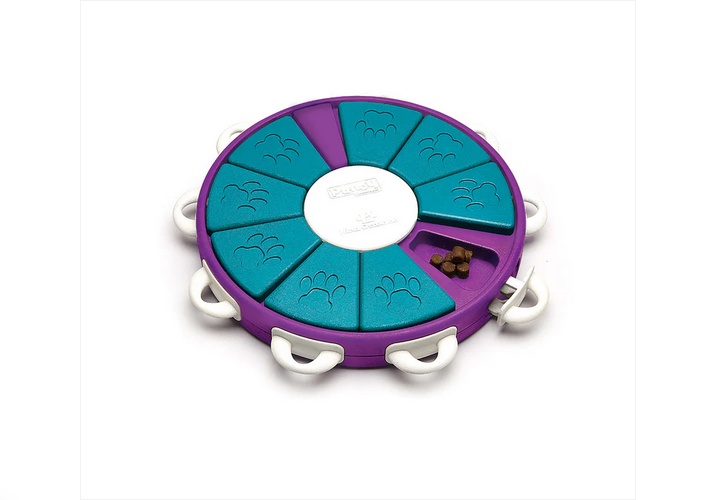Introduction
Dog puzzle toys are ingenious inventions designed to engage a dog's mind, encourage problem-solving skills, and provide mental stimulation and enrichment. In Australia, where pet ownership is widespread and dogs are cherished members of many households, puzzle toys have gained popularity as essential accessories for canine companions. These toys come in various shapes, sizes, and complexities, catering to dogs of all breeds, sizes, and ages. In this comprehensive guide, we will explore the world of dog puzzle toys Down Under, discussing their benefits, popular types, considerations for selection, and tips for maximizing enjoyment for your furry friend.
Benefits of Dog Puzzle Toys
Dog puzzle toys offer a range of benefits for both dogs and their owners, making them invaluable additions to any canine's toy collection:
-
Mental Stimulation: Engaging with puzzle toys requires dogs to use their cognitive abilities, including problem-solving, memory, and spatial awareness, which provides valuable mental exercise.
-
Preventing Boredom and Anxiety: Dogs left alone for extended periods may become bored or anxious. Puzzle toys provide entertainment and distraction, reducing boredom and alleviating stress and anxiety.
-
Encouraging Natural Behaviors: Many puzzle toys mimic activities found in a dog's natural environment, such as hunting, foraging, and scavenging, allowing dogs to indulge in instinctual behaviors in a safe and controlled manner.
-
Physical Exercise: Certain puzzle toys require dogs to move, manipulate, or interact with the toy physically, promoting physical activity and exercise, which is essential for maintaining overall health and fitness.
-
Bonding and Interaction: Sharing playtime with your dog using puzzle toys strengthens the bond between dog and owner, fosters trust and communication, and provides opportunities for positive reinforcement and reward-based training.
Popular Types of Dog Puzzle Toys
Dog puzzle toys come in a variety of types, each offering unique challenges and benefits for dogs:
-
Interactive Treat Dispensers: These toys dispense treats or kibble when manipulated or solved, rewarding dogs for their efforts and encouraging continued engagement.
-
Puzzle Balls and Cubes: Puzzle balls and cubes feature hidden compartments or chambers that can be filled with treats or food. Dogs must manipulate the toy to access the treats, stimulating problem-solving skills and providing mental enrichment.
-
Interactive Plush Toys: Interactive plush toys contain hidden squeakers, crinkle material, or other surprises that engage dogs' senses and encourage exploration and play.
-
Nesting Toys: Nesting toys consist of multiple layers or compartments that dogs must remove or disassemble to access hidden treats or toys, providing mental stimulation and encouraging persistence and problem-solving.
-
Snuffle Mats and Puzzles: Snuffle mats and puzzles feature fabric strips or compartments that hide treats or food. Dogs use their sense of smell to locate and retrieve the hidden rewards, promoting natural foraging behaviors and mental stimulation.
Considerations for Selecting Dog Puzzle Toys
When choosing dog puzzle toys for your furry friend, consider the following factors to ensure they are suitable and enjoyable:
-
Size and Complexity: Select puzzle toys appropriate for your dog's size, breed, age, and skill level. Start with simpler toys and gradually introduce more complex puzzles as your dog becomes more proficient.
-
Material and Durability: Choose puzzle toys made from durable, non-toxic materials that can withstand regular use and chewing. Avoid toys with small, detachable parts that could pose a choking hazard.
-
Safety Features: Look for puzzle toys with safety features such as rounded edges, sturdy construction, and secure fastenings to prevent injury during play.
-
Ease of Cleaning: Opt for puzzle toys that are easy to clean and maintain, with removable or washable components that allow for thorough cleaning and sanitation.
-
Interest and Engagement: Consider your dog's preferences, interests, and play style when selecting puzzle toys. Choose toys that appeal to your dog's senses, instincts, and personality to maximize engagement and enjoyment.
Maximizing Enjoyment with Dog Puzzle Toys
To ensure your dog gets the most out of their puzzle toys, follow these tips for a rewarding and enjoyable play experience:
-
Start Slowly: Introduce puzzle toys gradually and provide guidance and encouragement as your dog learns how to interact with them. Use treats or praise to reward progress and success.
-
Rotate Toys Regularly: Rotate puzzle toys regularly to keep them fresh and exciting for your dog. Introducing new toys or variations of existing toys prevents boredom and maintains your dog's interest and engagement.
-
Supervise Play: Supervise your dog's play with puzzle toys, especially during the initial stages of introduction. Monitor for any signs of frustration, aggression, or unsafe behavior and intervene as needed.
-
Mix Treats and Toys: Experiment with different types of treats and toys to keep your dog engaged and motivated. Varying textures, flavors, and sizes of treats add novelty and challenge to the puzzle-solving experience.
-
Stay Positive and Patient: Be patient and encouraging as your dog learns how to solve puzzle toys. Celebrate their successes and provide gentle guidance and support when they encounter challenges or setbacks.
Conclusion
Dog puzzle toys in Australia offer numerous benefits for dogs of all breeds, sizes, and ages, providing mental stimulation, enrichment, and entertainment. By engaging with puzzle toys, dogs exercise their cognitive abilities, alleviate boredom and anxiety, and indulge in instinctual behaviors in a safe and controlled manner. When selecting puzzle toys for your dog, consider factors such as size, complexity, material, safety, and engagement to ensure a rewarding and enjoyable play experience.
Introduce puzzle toys gradually, rotate them regularly, and supervise play to maximize enjoyment and prevent frustration or boredom. With the right selection of puzzle toys and a positive and patient approach, you can provide your dog with hours of puzzling fun and mental stimulation Down Under.


No comments yet